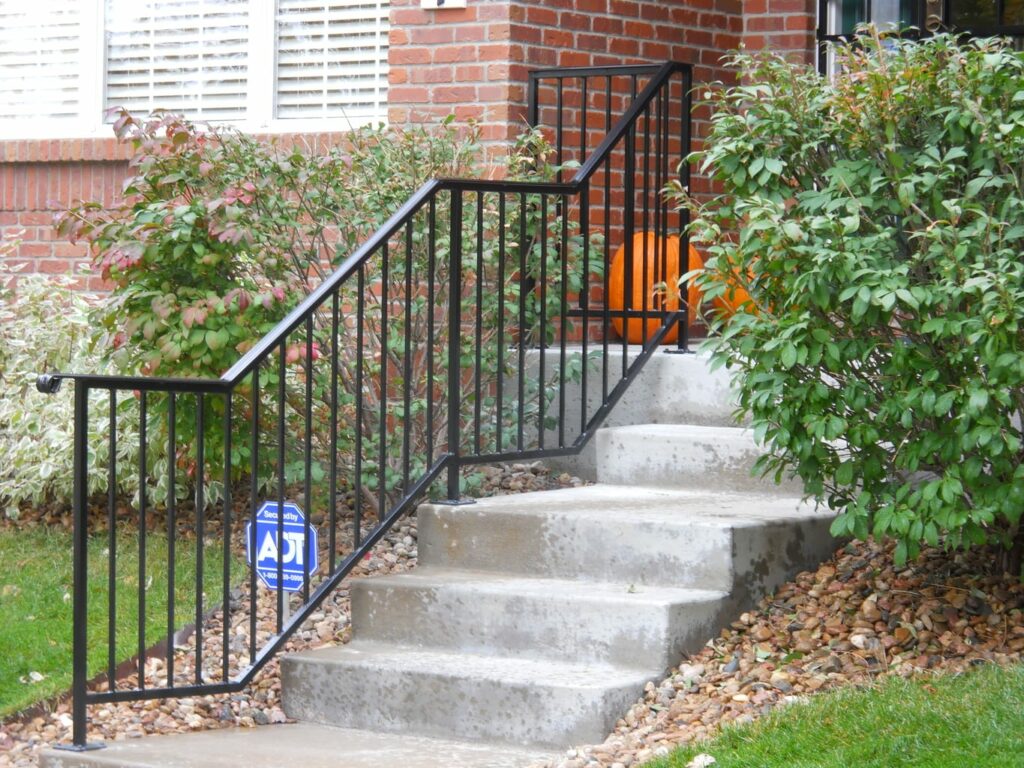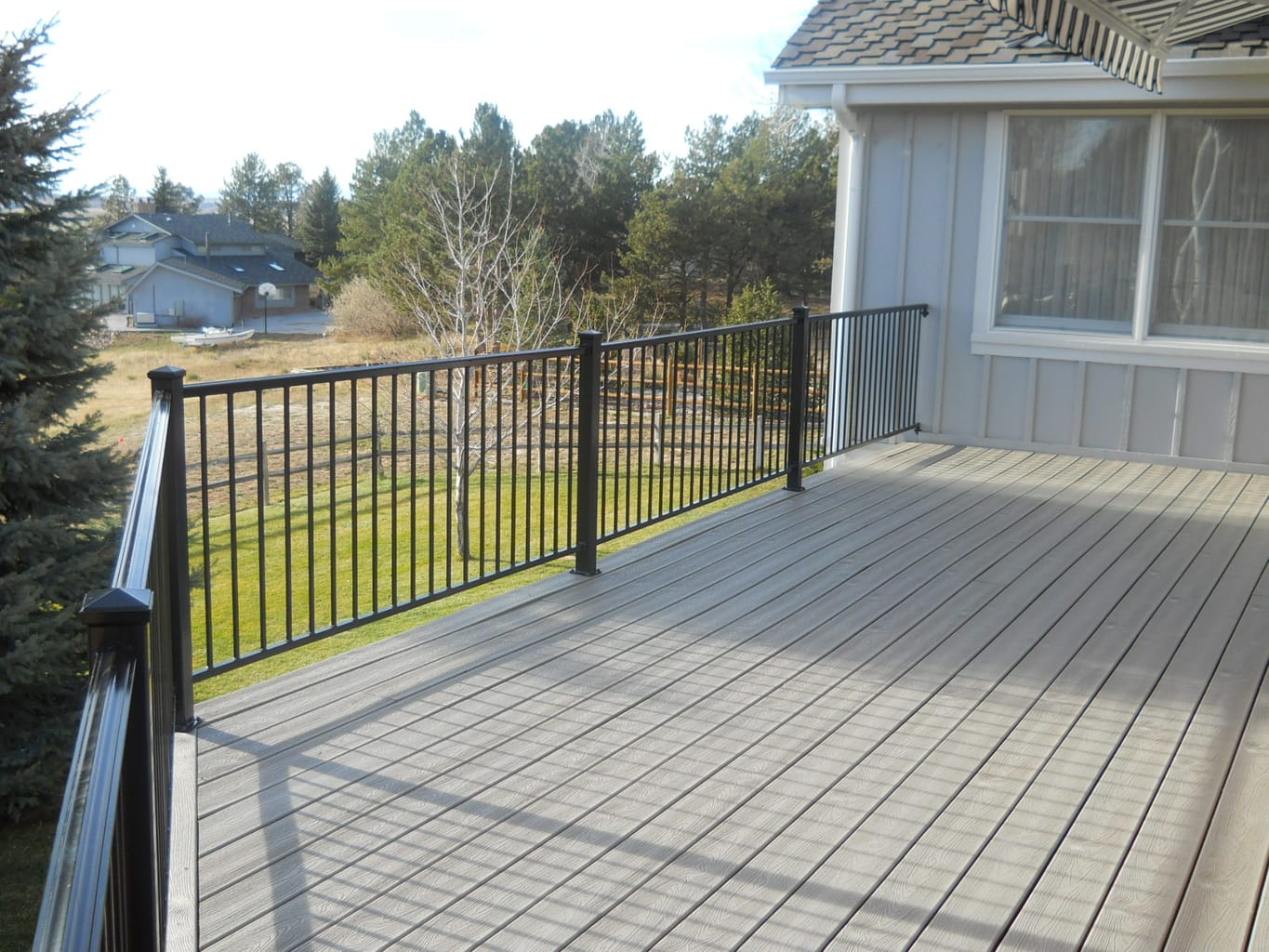When it comes to outdoor railing for your Colorado home, the material you choose will significantly impact both your immediate satisfaction and long-term costs. While wood railing has been a traditional choice for decades, steel railing has emerged as the superior option for homeowners who prioritize durability, low maintenance, and long-term value. Colorado’s challenging climate makes this decision even more critical, as outdoor materials must withstand extreme conditions that can quickly deteriorate inferior products.

Understanding Colorado’s Impact on Outdoor Materials
Colorado’s climate presents unique challenges for any outdoor building material. The intense UV radiation at high altitude accelerates fading and degradation of finishes. Temperature swings from winter lows of -20°F to summer highs exceeding 100°F cause expansion and contraction that stress materials and connections. Moisture from snow, ice, and sudden rainstorms creates conditions for rot, warping, and corrosion.
The Front Range experiences additional challenges with high winds, hail storms, and rapid freeze-thaw cycles that can cause tremendous damage to outdoor structures. Materials that perform adequately in milder climates often fail prematurely in Colorado’s harsh conditions.
Wood railing, despite its natural beauty, struggles with nearly every aspect of Colorado’s climate. Steel railing, when properly designed and finished, thrives in these same conditions.
Durability: Steel Wins Decisively
The most significant advantage of steel railing over wood is durability. Steel is inherently stronger and more rigid than wood, providing superior structural integrity that lasts for decades. Steel doesn’t warp, twist, crack, or split like wood does when exposed to moisture and temperature changes.
Wood railing faces constant threats from Colorado’s climate. Moisture infiltration leads to rot, particularly at joints and end grain where water can penetrate. Freeze-thaw cycles cause wood to expand and contract, creating cracks and separating joints. The intense UV radiation breaks down wood fibers, causing surface deterioration and splintering.
Steel railing resists all these issues. Properly powder-coated steel won’t rot, warp, or splinter. The material maintains its structural integrity through temperature extremes without the dimensional changes that plague wood. While wood may show significant deterioration within 5-10 years in Colorado’s climate, quality steel railing can last 30+ years with minimal maintenance.
Maintenance Requirements: A Clear Winner
Perhaps the most compelling reason to choose steel over wood is the dramatic difference in maintenance requirements. Wood railing demands constant attention to maintain both appearance and structural integrity. Steel railing requires minimal upkeep, saving homeowners countless hours and significant expense over the life of the installation.
Wood railing in Colorado typically requires annual maintenance including cleaning, sanding, staining or painting, sealing, and inspection for rot or insect damage. Even with diligent maintenance, wood railings often need board replacements, hardware tightening, and structural repairs. The total time investment can reach 20-40 hours annually, with material costs for stains, sealers, and replacement boards adding hundreds of dollars per year.
Steel railing maintenance is remarkably simple. An annual cleaning with mild soap and water is typically all that’s required. Occasional touch-ups of powder coating in high-wear areas might be needed, but major refinishing is rarely necessary. Hardware should be checked periodically, but properly installed steel railing requires minimal adjustment over time.
The maintenance time for steel railing is typically 2-4 hours annually—a fraction of what wood demands. The cost savings compound over time, making steel railing significantly more economical despite potentially higher initial installation costs.
Weather Resistance in Colorado’s Extremes
Colorado’s weather extremes separate superior materials from inferior ones. Steel railing excels in every weather challenge the state presents, while wood constantly struggles to survive.
During harsh winters, wood railing absorbs moisture from snow and ice. When temperatures drop, this moisture freezes and expands, causing cracks and splits. Repeated freeze-thaw cycles progressively damage the wood throughout the season. Steel railing is unaffected by these cycles—moisture doesn’t penetrate the powder-coated surface, and the material’s structural integrity remains constant regardless of temperature.
Summer heat and UV radiation pose different challenges. Wood dries out, cracks, and fades rapidly under Colorado’s intense high-altitude sun. The surface becomes rough and splintered, creating both aesthetic and safety issues. Quality powder-coated steel railing resists UV degradation, maintaining its color and smooth surface for years without refinishing.
Hail storms can damage both materials, but steel’s superior impact resistance means it typically survives storms that would shatter or severely damage wood railings. While hail might leave small dents in steel, it often breaks wood spindles and cracks rails, requiring costly repairs.
Safety and Code Compliance
Safety is paramount for any railing system, and steel provides superior performance in meeting and exceeding building code requirements. Steel’s strength allows for designs that easily meet load requirements while maintaining clean, attractive lines. Wood railings often require more substantial dimensions to achieve the same structural performance, resulting in bulkier, less attractive designs.
Colorado building codes have specific requirements for railing strength, spacing, and height. Steel railing can be designed to exceed these requirements with confidence that the material won’t degrade over time. Wood railing that initially meets code may fall below standards as the material deteriorates, creating potential liability issues.
The smooth, splinter-free surface of powder-coated steel is safer for children and adults alike. Wood railings develop rough surfaces and splinters as they age, creating injury hazards. Steel maintains its smooth surface indefinitely with minimal maintenance.
Design Flexibility and Aesthetic Options
Modern steel railing offers remarkable design flexibility that matches or exceeds what’s possible with wood. Custom fabrication allows for extensive design options.
Powder coating technology provides extensive color options that allow steel railing to complement any home style. Classic black remains popular for its timeless elegance, but several color options are available. Unlike paint on wood, which chips and fades, powder coating provides a durable, long-lasting finish that maintains its appearance for years.
The clean lines and precise fabrication possible with steel create a polished, professional appearance that enhances property value. While wood railing can look beautiful when new, it rarely maintains that appearance for long in Colorado’s climate.
Environmental Considerations
For environmentally conscious homeowners, steel railing offers several advantages. Steel is one of the most recycled materials in the world, and steel railing can be fully recycled at the end of its life. Many steel products contain significant recycled content, reducing the environmental impact of production.
Wood railing requires ongoing inputs of stains, sealers, and paints, many of which contain volatile organic compounds (VOCs) that impact air quality. The chemical treatments needed to preserve wood can introduce toxins into the environment. Steel railing with powder coating eliminates these ongoing chemical requirements.
The longer lifespan of steel railing also means fewer resources consumed over time for replacement and disposal. While sustainably harvested wood can be an environmentally responsible choice, the short lifespan and high maintenance requirements in Colorado’s climate make it less environmentally favorable than durable steel.
Installation Considerations
Professional installation is crucial for both wood and steel railing, but the installation process differs significantly. Wood railing installation is more accessible to DIY homeowners and general contractors, but achieving professional results that will last requires expertise in proper sealing, fastening, and structural design.
Steel railing installation requires specialized equipment and expertise in welding, fabrication, and proper anchoring. However, professional installation by experienced steel railing specialists ensures optimal performance and longevity. The precision possible with professional steel fabrication and installation results in a finished product that’s superior in both appearance and performance.
At Liberty Home Products, we specialize in custom steel railing installation throughout Colorado, including Denver, Highlands Ranch, Colorado Springs, and Fort Collins. Our experience with local building codes, Colorado’s climate challenges, and structural requirements ensures your steel railing performs flawlessly for decades.
Real-World Performance in Colorado
The proof of steel railing’s superiority is visible throughout Colorado neighborhoods. Wood railings that are just 5-10 years old often show significant deterioration—faded finish, warped boards, loose connections, and visible rot. Homeowners face constant maintenance battles to keep wood railings safe and attractive.
Steel railings installed 20+ years ago still look and perform like new with minimal maintenance. The powder coating maintains its color and finish, the structure remains rigid and secure, and the overall appearance continues to enhance property value. This real-world performance demonstrates the wisdom of investing in quality steel railing.
Colorado’s harsh conditions make the difference even more pronounced. In milder climates, wood might be a more viable option, but in the Front Range’s extreme environment, steel is clearly the superior choice.
Impact on Property Value
Quality outdoor improvements enhance property value, and steel railing provides better returns than wood. Prospective buyers recognize the maintenance savings and longevity of steel railing, making it an attractive feature. The clean, professional appearance of steel railing also enhances curb appeal more effectively than aging wood.
Real estate professionals consistently note that low-maintenance outdoor features are increasingly important to buyers. The ability to enjoy outdoor spaces without constant upkeep is a significant selling point. Steel railing delivers this benefit while also providing superior safety and durability that buyers value.
Wood railing, especially if it shows signs of aging, can actually detract from property value. Buyers see maintenance and replacement costs, not an asset. Fresh steel railing, in contrast, signals quality and care throughout the property.
Making the Right Choice for Your Colorado Home
When evaluating railing options for your Colorado home, the evidence overwhelmingly supports choosing steel over wood. Steel provides superior durability, minimal maintenance, better weather resistance, enhanced safety, design flexibility, and lower total cost of ownership. For Colorado homeowners who want to enjoy their outdoor spaces without constant upkeep and worry, steel railing is the clear choice.
The higher initial investment in steel railing pays dividends year after year through reduced maintenance time and costs, longer lifespan, and enhanced property value. In Colorado’s challenging climate, choosing materials that can truly withstand the conditions isn’t just smart—it’s essential.
Ready to upgrade your outdoor spaces with durable, low-maintenance steel railing? Contact Liberty Home Products today to discover how quality steel railing can enhance your Colorado home’s safety, appearance, and value for decades to come. Our expert team serves Denver, Colorado Springs, Fort Collins, and throughout the Front Range with professional steel railing installation that’s built to last.

